Design & Construction¶
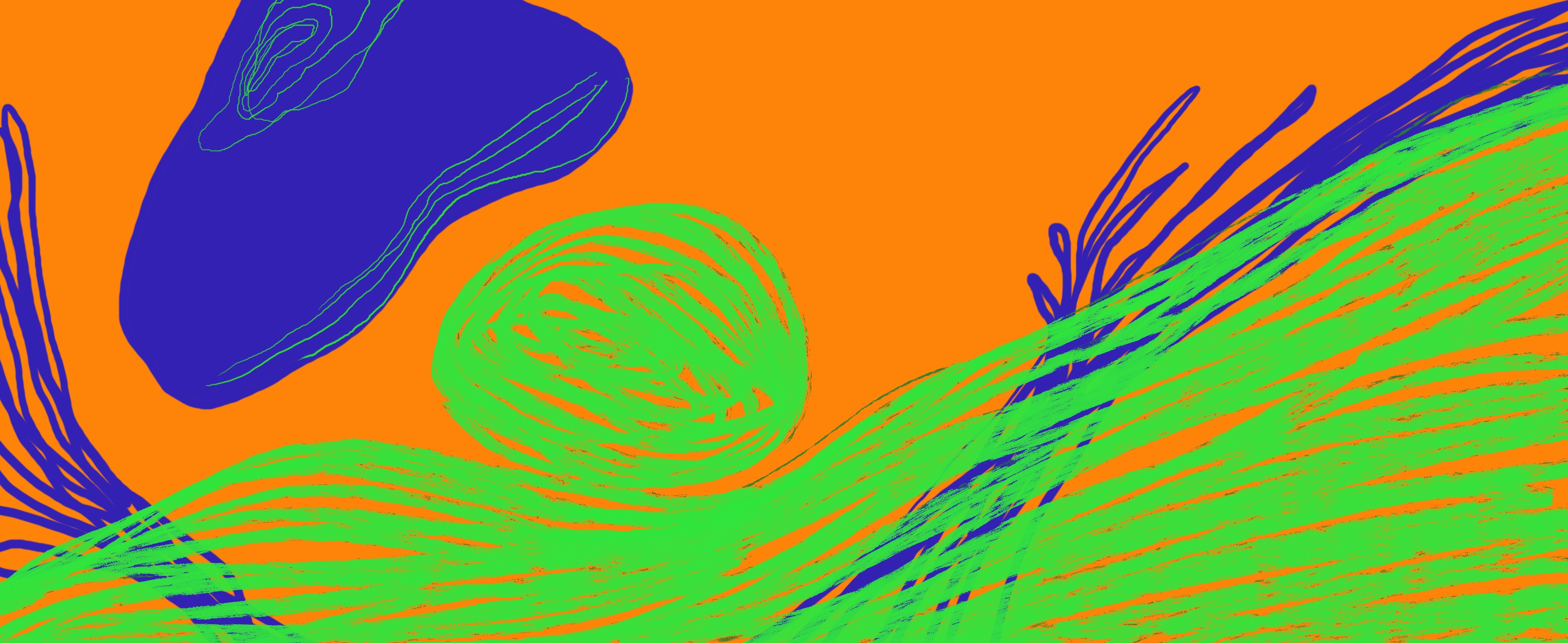
What is a Lab?¶
A laboratory is a physical space equipped with specialized tools, instruments and materials, used to carry out research, experiments, tests and analysis in various areas of study, such as natural sciences, engineering, medicine, computer science, among others and why not... ART!
In a laboratory, a variety of activities can be carried out, from simple testing to in-depth research and development of new technologies. Can be used for a variety of purposes, such as research and development of new products, quality control, sample analysis, risk assessment, among others.
Conditions¶
The requirements that a laboratory must have may vary depending on the type of laboratory and the activities carried out in it. However, in general, a laboratory should meet the following requirements:
-
Space: The laboratory should have sufficient space for equipment, materials and users.
-
Lighting: The laboratory should have adequate lighting to allow activities to be carried out safely and efficiently. It is recommended to use artificial lighting that does not produce shadows or reflections.
-
Ventilation: The laboratory should have an adequate ventilation system to control temperature and humidity.
-
Equipment: The laboratory must have the appropriate equipment and tools to carry out the activities foreseen.
In summary, a laboratory must have the necessary conditions to ensure the safety of users, the quality of the results obtained and the efficiency of the activities carried out.
Domestic Lab¶
It is possible to have a laboratory at home! although in general it refers to a space dedicated to carrying out scientific or experimental activities at an amateur or hobby level, rather than a professional and highly specialized space.
The intention will not be to find a new molecule, we will work and explore simple and low risk materials to produce products in which we are interested, for example to get a bioplastic made of organic waste to replace household plastic or a natural itching cream made of cellulose and spirulina
It is important to keep in mind that setting up and using a home laboratory involves additional risks and safety requirements, especially when handling chemicals, hazardous materials or using dangerous tools and equipment.
ArtLab¶
I wanted to play between science and art. It has been beautiful to find projects that combine the idea of laboratory and studio. really the intention is to build a personal space, an intimate work place in which you can work and of course play.
There are materials that an artist will never leave, such as charcoal, sketchbook and watercolors for quick sketches, but there are still materials to be discovered with which we can build what we have not imagined.
On the other hand, technology is providing us with tools with which we can build unique works that our bare hands cannot achieve at their speed.
For this reason, why not integrate these tools to our laboratory! a 3d printer that can print an orange peel sculpture or a tool that helps us to draw big pictures with bacterial dyes.
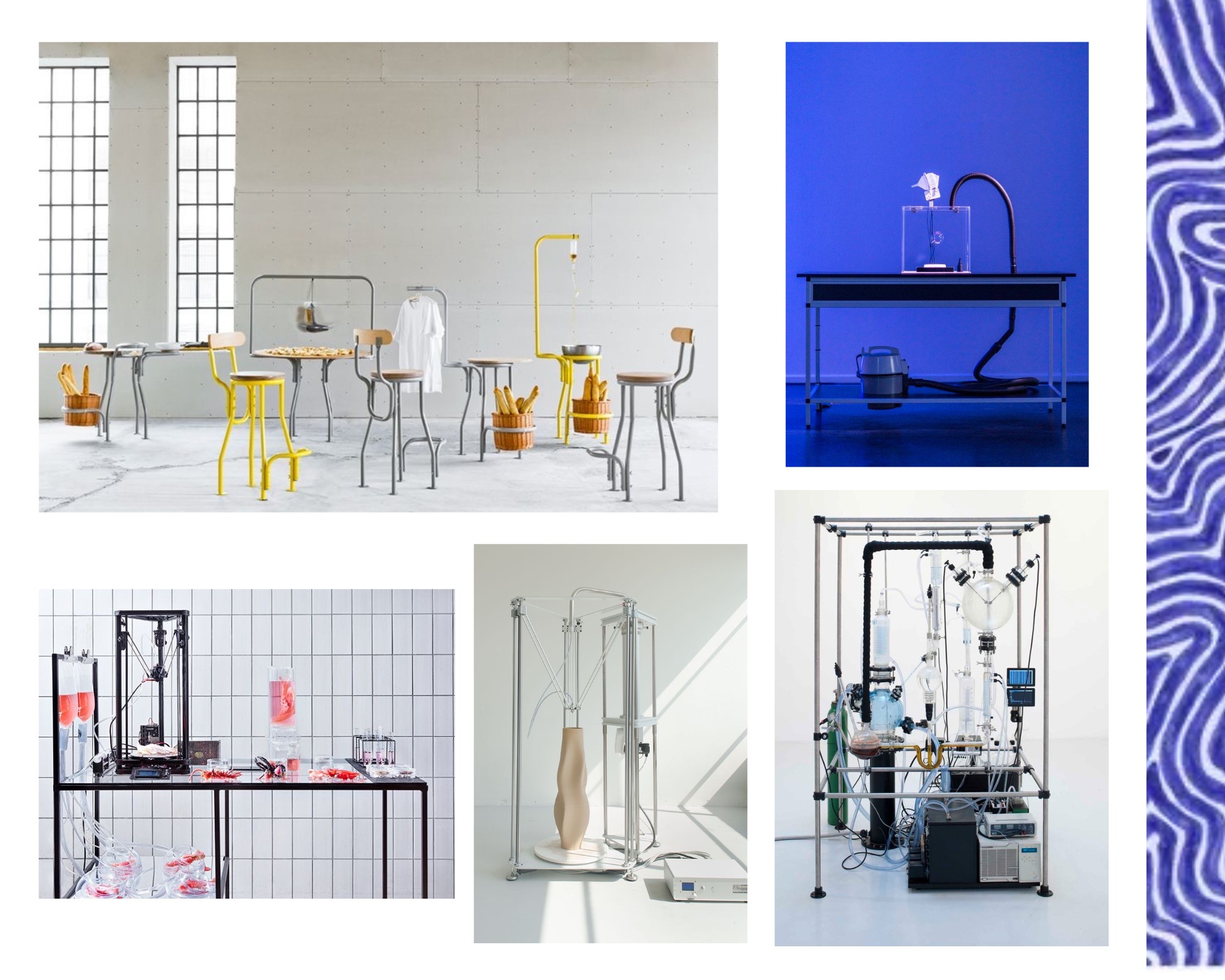
References Artist & Studios¶

- "The Kitchen" by Studio Rygalik (Poland)
Everyday objects such as a chair and a table are designed so that a four-legged structure and a small space make up a functional kitchen. I am inspired by the concept of using the necessary space and building different kitchen structures in different objects. The cleanliness and visual order of their project is amazing. Studio Rygalik website
- "The Distillery" by Volkskrant website
- "Precious plastic" by Dave Hakkens
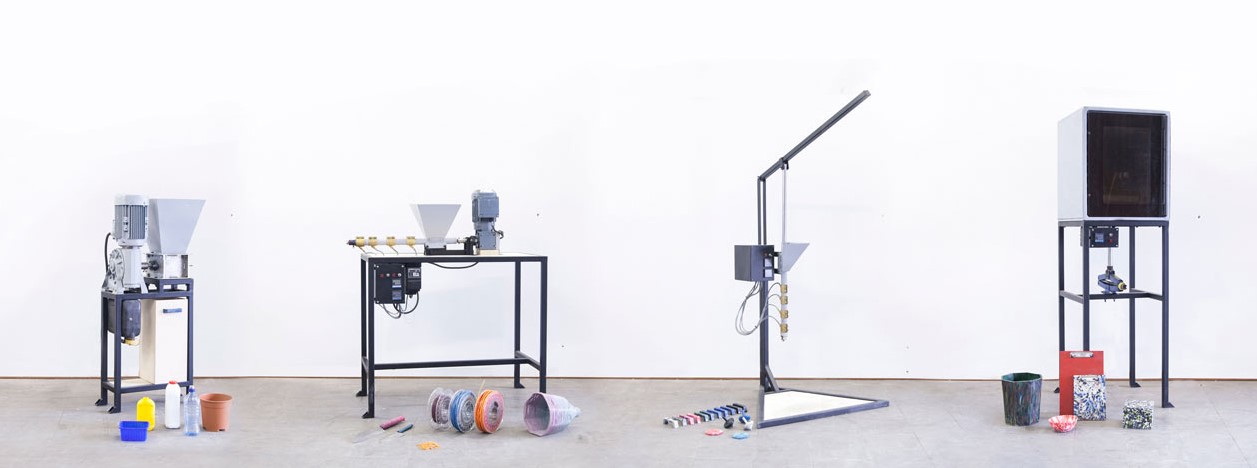
A set of plastic machines developed for users to set up a small scale plastic workshop.The collection of DIY machinery is based on general industrial techniques and made to work with recycled bits of PET or PP. In this project what more inspires BmLab is the autosufficent idea to build something and also recycling.
BmLab Design¶
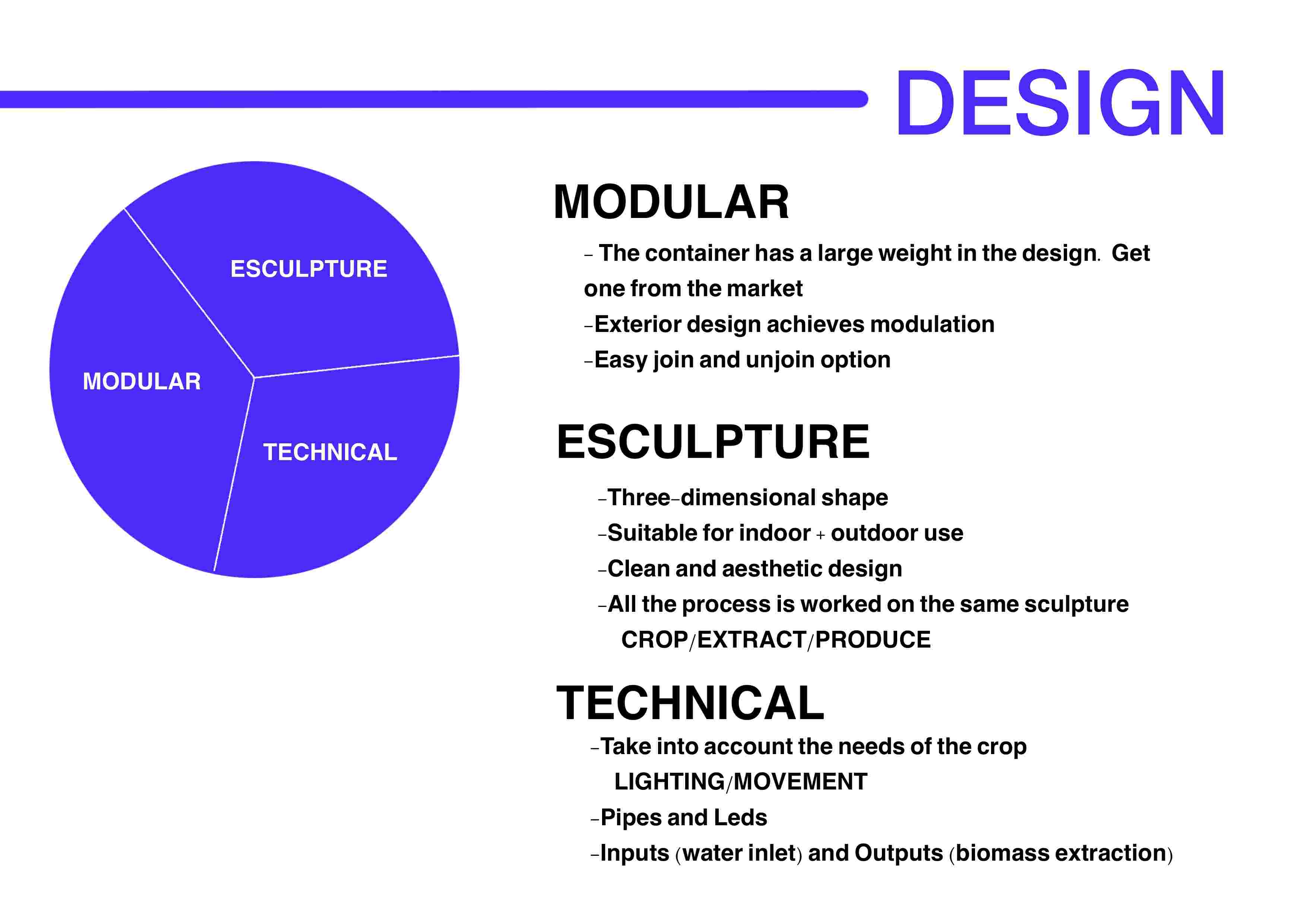
On the left the draft and on the right the actual laboratory structure.
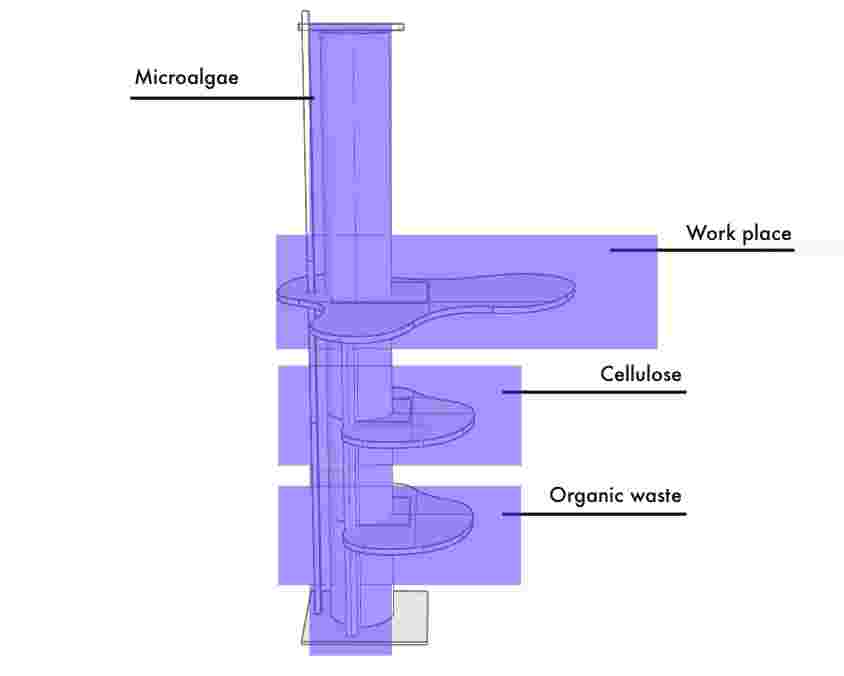

Sketches¶
As seen at the beginning of the documentation, the laboratory has some necessary requirements, so the design of the BmLab has to respect three main concepts: reduced space, organizer and brightness.

 The first idea was to build a collapsible laboratory and divide the three different biomasses that can be produced into three sections. However, getting a bioreactor that is two meters high changed the design concepts of the project.
The first idea was to build a collapsible laboratory and divide the three different biomasses that can be produced into three sections. However, getting a bioreactor that is two meters high changed the design concepts of the project.
3D Design¶
Two different designs have influenced the construction process over the last two months.
At the beginning I had the idea of a structure that looked like a laboratory, with colder structures and visually straighter. As I was elaborating the idea, I realized the mistakes and difficulties that this first design had, until I understood that the laboratory could be transformed and adapted more Artistically. Taking into account the simplicity and the reduction of space since not all houses have space to have a large structure.
On the other hand, I let my imagination flow and started to enjoy more the process until the organic shapes adapted to the structure. The end is much more visual, attractive and the properties of the crop start to play visually, like the lighting, the bubbling and the bioreactor as the main pillar of the project.

To be honest, this step of redesigning a project was quite complicated for my head and creativity. I was so into the idea from the beginning that later I had a hard time changing the concepts and ideas of the design. This unexpected event has taught me that the world of design is to start drawing on a white sheet of paper constantly, (later you realize that the process is long but you never start from scratch).
Prototypes¶
Construction¶
In the following video I show the process of the construction of the laboratory. You will see the 3D design, the machines, tools and the welding proces.

3D Printing¶

With the Prusa i3 printer I have been able to print the molds. With the help of Grashopper or Rhino I have designed the shapes to pour the material and get much more attractive shapes. Below i show one of the molds and the result of the spirulina biomaterial.



In this case, the mold did not print correctly, so I thought of integrating the printing film with the biomaterial. The result is really interesting, as the bioplastic is much stiffer but still very elastic.
CNC Machine¶
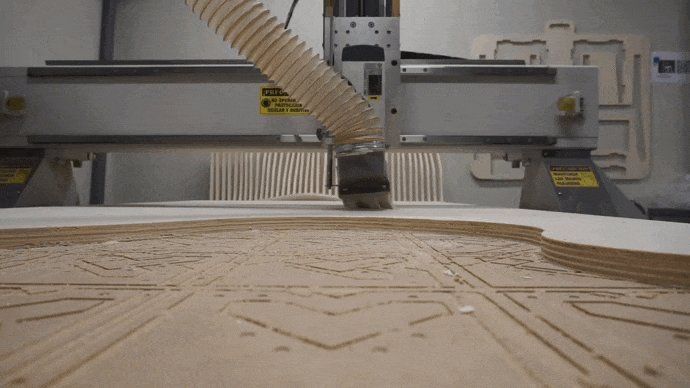

Thanks to the cutting machine I have been able to work the wood easily and quickly. The first thing has been to design the shelves and the table with Rhino. Although it seems simple,but this brings an important exploration and design work, as there are many aspects to take into account:
- The WEIGHT so that the lab does not wobble
- The organic SHAPE: taking into account the necessary and sufficient space
Welding¶

Laser Cutter¶
Biorreator¶
The bioreactor is a transparent methacrylate tube 2m high and 20cm in diameter.
Oxigenation¶
Table of Materials¶
| MATERIALS | BmLAB | WEBSIDE |
|---|---|---|
| Tube 2m Long | methacrylate | vascoplast.com |
| Wood | _ | at BDC workshop |
| Oxigenation tube | Plastic | amazon.es |
| Air Pump (small) | First Crops | amazon.es |
| Air Pump(bigger) | For the Final Crop | |
| White LED Strip | In my case I buy it in a neighborhood hardware store, but here is a link to buy it online. | amazon.es |
All Files¶
Oxigenation part Design Prototype
Drive link with all downloadable files
Final result¶
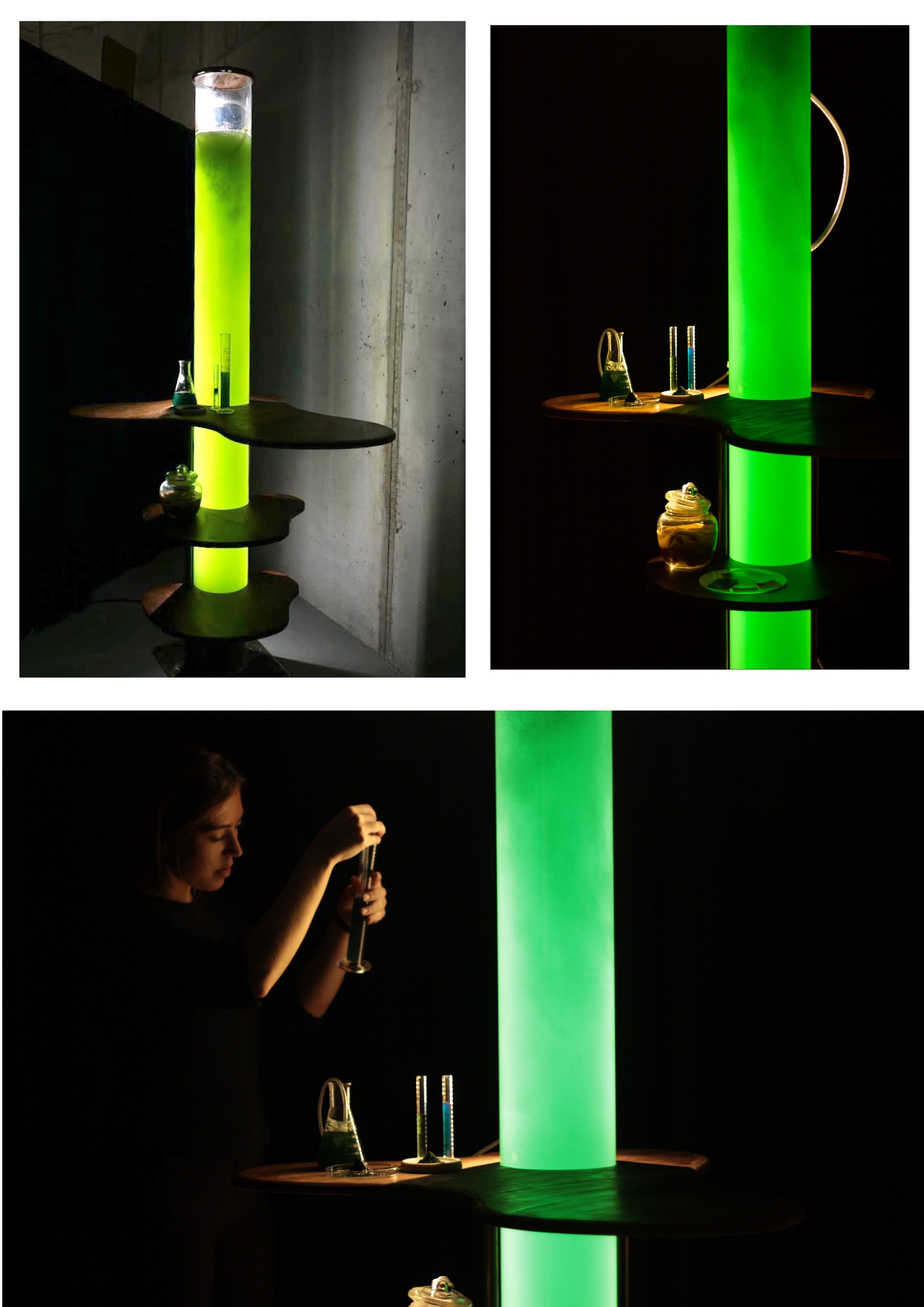 a
a